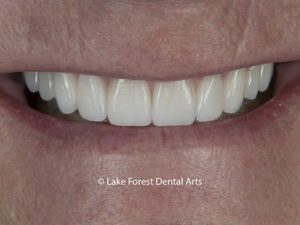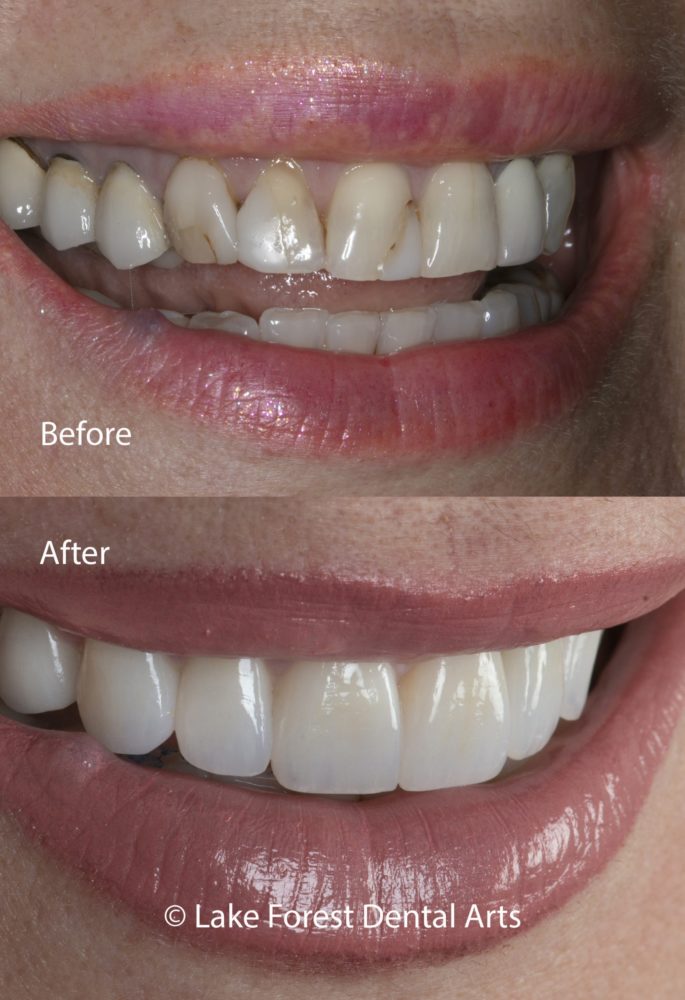
Modern patients and dentists prefer realistic esthetics and frequently opt for beautiful zirconia crowns. Zirconia is considered a metal. Although it is listed as a ceramic it has more of the characteristics of metals. There are two main types of crowns that are used for different situations. One type is for cosmetic situations and the other is for high stress situations. Zirconium crowns have only been mainstream for 6 years. However, in that short span of time, they have nearly replaced the alternative super strong all gold versions.
Dental crowns have been used in human dentistry for nearly 2600 years, and they’re a versatile tool in the restorative and cosmetic dentist’s toolkit. From ancient times until early in the 20th century, people who needed a tooth crowned had to opt for an alloy of gold or another malleable metal. Although metal caps last for a long time and will not damage the surrounding teeth, they are highly conspicuous.
Different Types of Zirconia Crowns
Zirconium dental crowns have many uses in restorative and cosmetic dentistry practice. They can be used to reinforce a cracked or broken tooth, mask a severely stained or misshapen tooth, or restore a dental implant. Thanks to their supreme strength and durability, this type of cap is getting more and more popular.
Monolithic Zirconium crowns:
This type of dental ceramic contains zirconium oxide, a material that renders it virtually unbreakable. This extremely strong type of ceramic resists chips, breaks, and stains. It can be color matched to your teeth but it is somewhat opaque. Due to the ugly opacity, monolithic restorations are better placed in the back of the mouth.
These monolithic restorations are cad cam milled. Giant machines are used to create these little works of art from digital files created by the technician. Typically, only the larger production dental laboratories have these expensive milling machines. The small boutique labs are forced to contract them out. The only other crown that comes close to this strength is a gold crown.
Layered zirconium crowns:
As the name suggests, layered restorations are made with layered lithium disilicate ceramic on top of the coping. These layered porcelains give them the realistic translucence needed for restorations in the front of the mouth. The top layered ceramic is done the same way as for ips e.max versions.
These versions have sturdy cores overlain with layers of delicate, reflective porcelain. The way that the ceramist fabricates the cap will influence its strength and esthetics. A master ceramist can make beautiful restorations.
Layered versions tend to be more susceptible to chipping than PFM crowns. The pretty porcelain can chip easily.
Which Type of Cap is Best for You?
The type that is right for you will depend on several factors. These factors include where it will be placed in your mouth, the condition being addressed, your unique lifestyle, and your budget. For instance, all-porcelain versions offer the very best esthetics, since the material used to make them contains silica, which reflects light in much the same way as natural tooth enamel.
Traditional all-porcelain caps can chip, fracture, and accumulate stains over time or if they’re exposed to excessive force or stress. In addition, certain types of porcelain caps, like those made from feldspathic ceramic, require the skills of a master ceramist and are a higher end choice.
Zirconium Crowns
These crowns are exceptionally hard and strong. In fact, they are so strong that they have been known to cause damage to the opposing natural teeth. Special care must be taken with the design to prevent excessive wear on neighboring enamel. For the most part, most dentists prefer to place them in the back of the mouth. Restorations in the back of the mouth require more strength than in the front teeth.
What to expect during placement
No matter what kind of zirconia you choose, the placement process is essentially the same as with a traditional crown. Typically, their placement takes two office visits, scheduled a few weeks apart.
During the first appointment. Dr. Fondriest prepares the tooth by removing small amounts of tooth structure. Any decay or damaged portions of the tooth are removed at this point as well. Impressions are then taken of the prepared teeth and the opposing teeth.
These impressions are sent to our trusted dental lab. There, a trained technician creates your new restoration based on your unique oral anatomy. This process can take two to four weeks to complete, so Dr. Fondriest places a temporary crown to protect the tooth in the meantime.
Once your restoration has been made, you’ll be scheduled for a second appointment. During this visit, Dr. Fondriest checks the shape, shade, and fit. If everything looks good, he bonds it into place using a high quality dental cement. Finally, he assesses your bite and makes any necessary adjustments.
Disadvantages of each of the Zirconia crown types
Zirconia oxide is not as translucent as other porcelain types such as Emax. The opacity may limit their use to crowns and bridges on the back teeth. Technology advances are improving our ability to add tooth coloring. Soon in the future, the appearance may be a non-issue.
When it is time to deliver these new caps, adjustments are more difficult due to the hardness of the material. It takes longer to deliver these caps than the restorations made of other materials.

The newer dental ceramics have the strength without the cosmetic limitations of metal based restorations. Solid zirconia restorations are much stronger than porcelains.
The Strength of Monolithic Zirconium Restorations
There is currently heavy marketing directly to dentists promising superior strength. This type of ceramic crown can be very abusive to the opposing teeth. They also are not very aesthetic. The zirconium coping has the translucency and vitality of a toilet bowl. In other words, they are white and opaque.
No matter what you hear or read, all dental restorations have a finite life span and eventually need replacement. They may not break but they still can leak and eventually decay. They can be very difficult to remove without hurting the underlying tooth. 100% Zirconium inlays and onlays are not recommended.
Why visit a cosmetic dental expert?
There are many choices when it comes to cosmetic dentistry. It is important to have the help of an extensively trained and highly experienced restorative dentist like Dr. Fondriest. He has received thousands of hours of continuing education in prosthodontics, the specialized study of dental prosthetics. He has published many articles and book chapters. Most of his writing has focused on different aspects of creating beautiful, long lasting dentistry in diverse peer reviewed publications.
Finally, he partners with Matt Roberts, CDT, a world class ceramist to fabricate the custom-designed dental crowns he places for his patients.
Learn which types of zirconia based crowns are best for you
If you are looking for invisible restorations, schedule a consultation by calling us at 847-234-0517. We proudly serve patients from the metropolitan Chicago area as well as the Northwest and North Shore suburbs. Dr. Fondriest has also treated hundreds of patients across the United States.
Dr Fondriest is a Nationally recognized and highly sought after cosmetic dentist. He serves clients from throughout the United States

